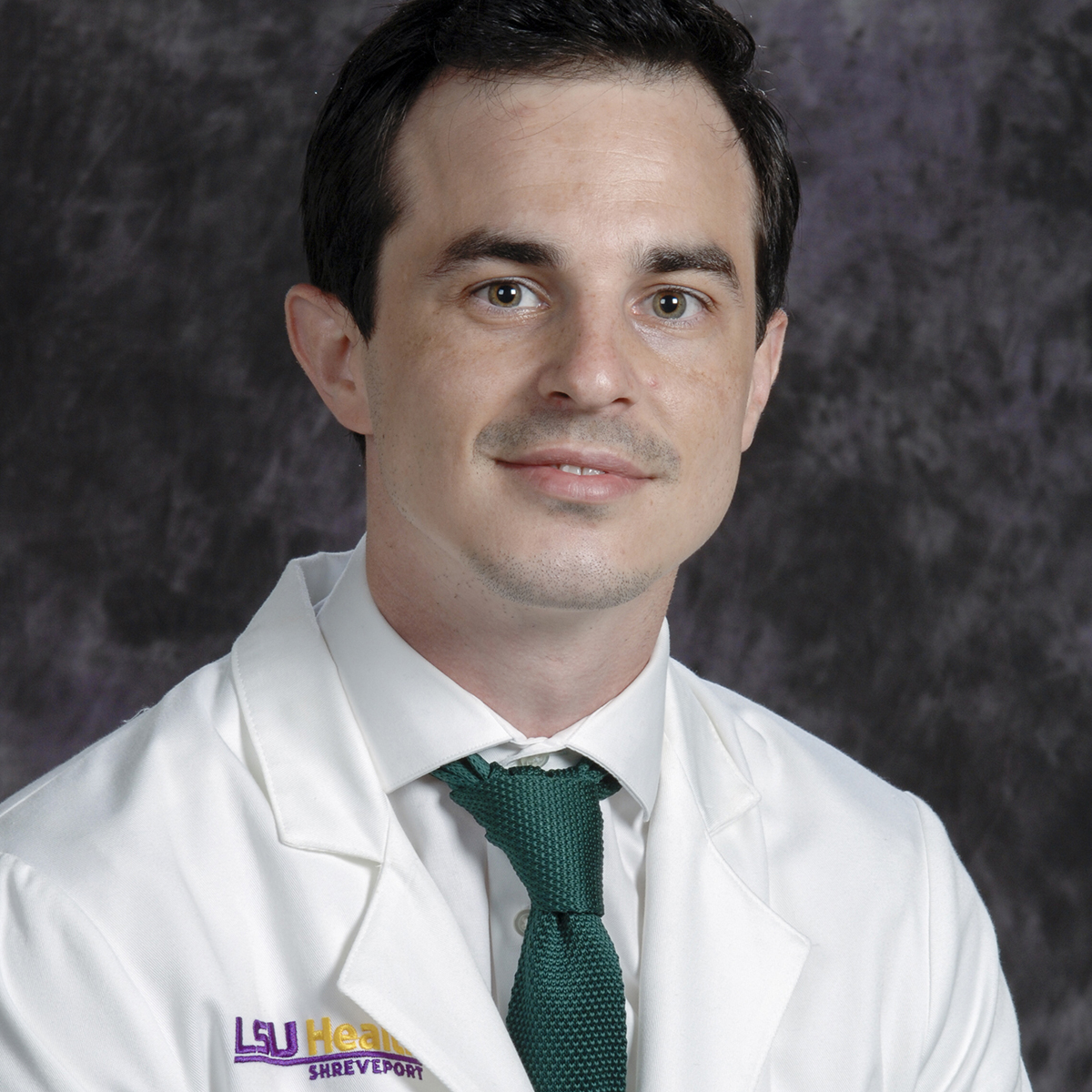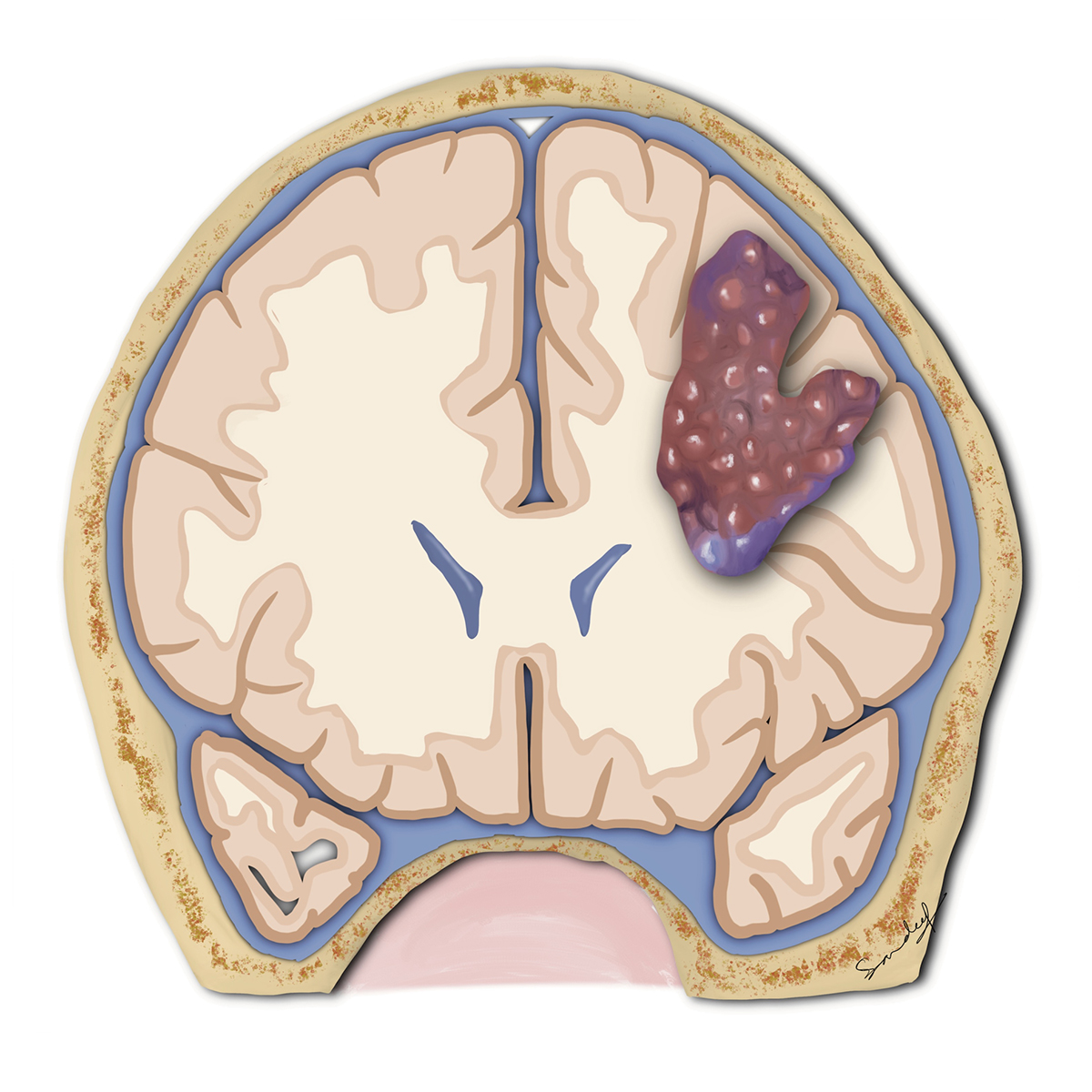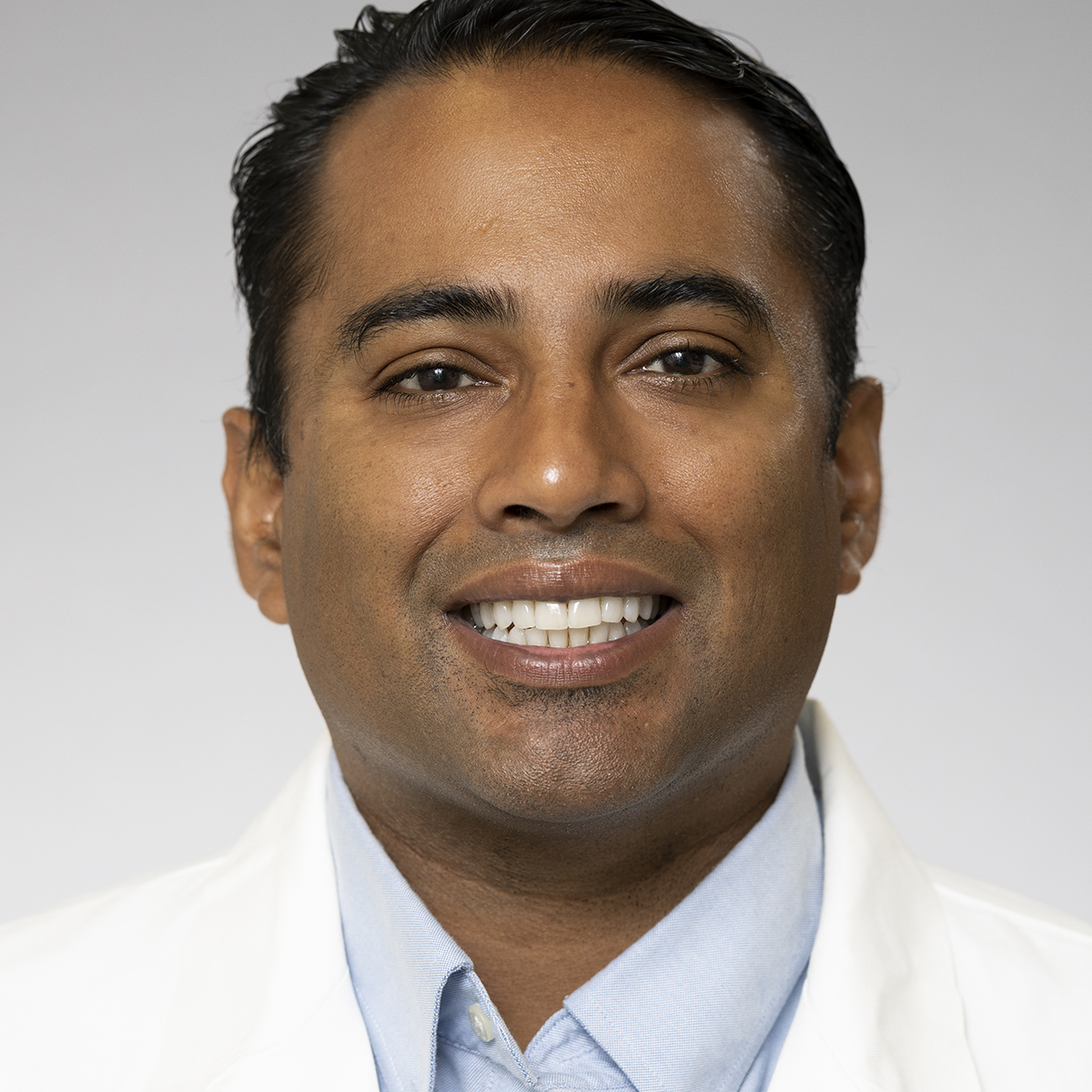Researchers at LSU Health Shreveport and LSU Shreveport Use AI to Better Understand and Treat Brain Tumors
September 20, 2022
Medical doctors are collaborating with computer scientists to improve care for patients with cavernous malformations, some of the most difficult-to-treat tumors in the head and spine.

Dr. Caleb Stewart is a neurosurgical resident at LSU Health Shreveport. He’s collaborating with computer scientists at LSU Shreveport to use AI to better diagnose and treat cavernous malformations, which he calls “one of the most understudied areas in neurology.” As a level-one trauma center, LSU Health Shreveport has accumulated lots of data on patients with cavernous malformations for over a decade.
Cavernous malformations are vascular tumors in the brain or spinal cord. Although “benign” as opposed to cancerous, these blood vessel lesions can still cause serious health problems, such as epilepsy, stroke and blindness, as well as issues with movement, numbness and tingling throughout the body. This is primarily because cavernous malformations tend to burst or bleed, which can impact nearby tissues in spontaneous and seemingly inexplicable ways until the tumors are diagnosed, usually by magnetic resonance imaging, or MRI. Most cavernous malformations are not found until they start causing problems, but once known, doctors and patients are faced with the difficult decision of whether to operate, medicate or leave them be.
“Medicine in general is considerably complex and neurosurgery is extremely complex, with cavernous malformations among the most difficult to manage,” said Dr. Caleb Stewart, neurosurgeon at LSU Health Shreveport. “It’s also one of the most understudied problems in neurosurgery because every malformation presents as an apples-and-oranges problem—each one appears unique, so it’s difficult to compare, plan procedures and make decisions on the best course of action.”
LSU Health Shreveport, LSU Shreveport, Ochsner Health and collaborators in Australia are now leveraging big data science and artificial intelligence, or AI, to solve this challenge and provide better care for patients. The researchers will use more than a decade’s worth of clinical data from LSU Health Shreveport—electronic health records, lab results, diagnostic codes, medical imaging and pathology slides are just some of the many sources of information that contribute to the rich dataset of close to 3,000 variables. That’s far more than most neurosurgeons are able to consider on a day-to-day basis in their work with patients.
“These lesions are located in the brain and spinal cord with those near the base of the skull or deep into the brain being inherently high-risk areas,” Dr. Stewart said. “Frankly, we don’t yet have the right analytical tools to be able to predict if they’re going to cause problems or not. If they don’t bleed and we intervene, we can do our patients a huge disservice. All we have to go on right now is experience, intuition and consensus—our judgment is not actually cemented in patient-specific probability.”

Cavernous malformations are mulberry-type lesions in the brain or spinal cord that can cause serious health problems, even death, but are difficult to characterize and risky to treat. Through a new study, clinicians and computer scientists are collaborating to make it easier to predict outcomes for individual patients and help doctors determine the best course of action, whether that’s surgery, medication, or something else.
– Illustration by Dr. Sandeep Kandregula, LSU Health Shreveport.
AI, meanwhile, is exceptionally good at recognizing patterns in large datasets, including between variables no one expected to be connected. This could help doctors make better predictions of patient outcomes, whether the best choice is surgery, radiation, medication or doing nothing at all.
Subhajit Chakrabarty, assistant professor of computer science at LSU Shreveport, brings his AI and machine learning expertise to the project.
“What I love about this project is the data challenge,” Chakrabarty said. “Apart from many observed and recorded variables, there are likely to be several hidden variables, several hidden data clusters and complex causalities. Not only would we like to derive new data-driven insights for cavernous malformations, but we would also like to establish a high benchmark of accurate predictive modeling.”
The researchers’ goal is to use the cavernous malformations study as a springboard for other projects.
“A big part of our challenge is the team building, collection and management of the data itself,” Dr. Stewart said. “We have a supercomputer now, so from a computational standpoint, we can be more productive and efficient with data processing. However, we also have to build new infrastructure between people—researchers and clinicians in different disciplines and locations—to achieve the much larger vision of what we’re trying to do here, which is to help patients.”
Dr. Steven Conrad is the clinical informatics division chief at LSU Health Shreveport and a collaborator on the project.
“Multidisciplinary teams that combine expertise in clinical medicine and data science are key to leveraging the capabilities of new-generation machine learning and artificial intelligence techniques,” Dr. Conrad said. “Dr. Stewart and his colleagues have assembled a team that can tackle difficult real-world problems in biomedicine.”

Dr. Korak Sarkar at Ochsner Health in New Orleans is the medical director of Ochsner’s m3D Lab. He says the AI-driven LSU research on cavernous malformations “will greatly benefit Louisiana.” Cavernous malformations can appear spontaneously or as a result of genetic predisposition, radiation or environmental exposure.
Neurosurgeons and neurologists in Louisiana and around the world would benefit from better predictive tools in the diagnosis and treatment of cavernous malformations, according to Dr. Korak Sarkar at Ochsner Health in New Orleans. He founded and currently serves as the medical director of Ochsner’s m3D Lab. Their work in advanced visualization leverages tools like additive manufacturing and mixed reality to create patient-specific anatomical models for patient education, medical training and clinical support.
“The deployment and validation of novel tools in healthcare, such as machine learning, 3D printing and virtual reality, require collaborations like the ones between LSU and Ochsner,” Dr. Sarkar said. “These initiatives will greatly benefit Louisiana, where our population unfortunately carries a large disease burden, particularly in cerebrovascular disease.”
“The deployment and validation of novel tools in healthcare, such as machine learning, 3D printing and virtual reality, require collaborations like the ones between LSU and Ochsner...These initiatives will greatly benefit Louisiana, where our population unfortunately carries a large disease burden, particularly in cerebrovascular disease.”
Dr. Korak Sarkar, medical director of Ochsner Health's m3D Lab in New Orleans


